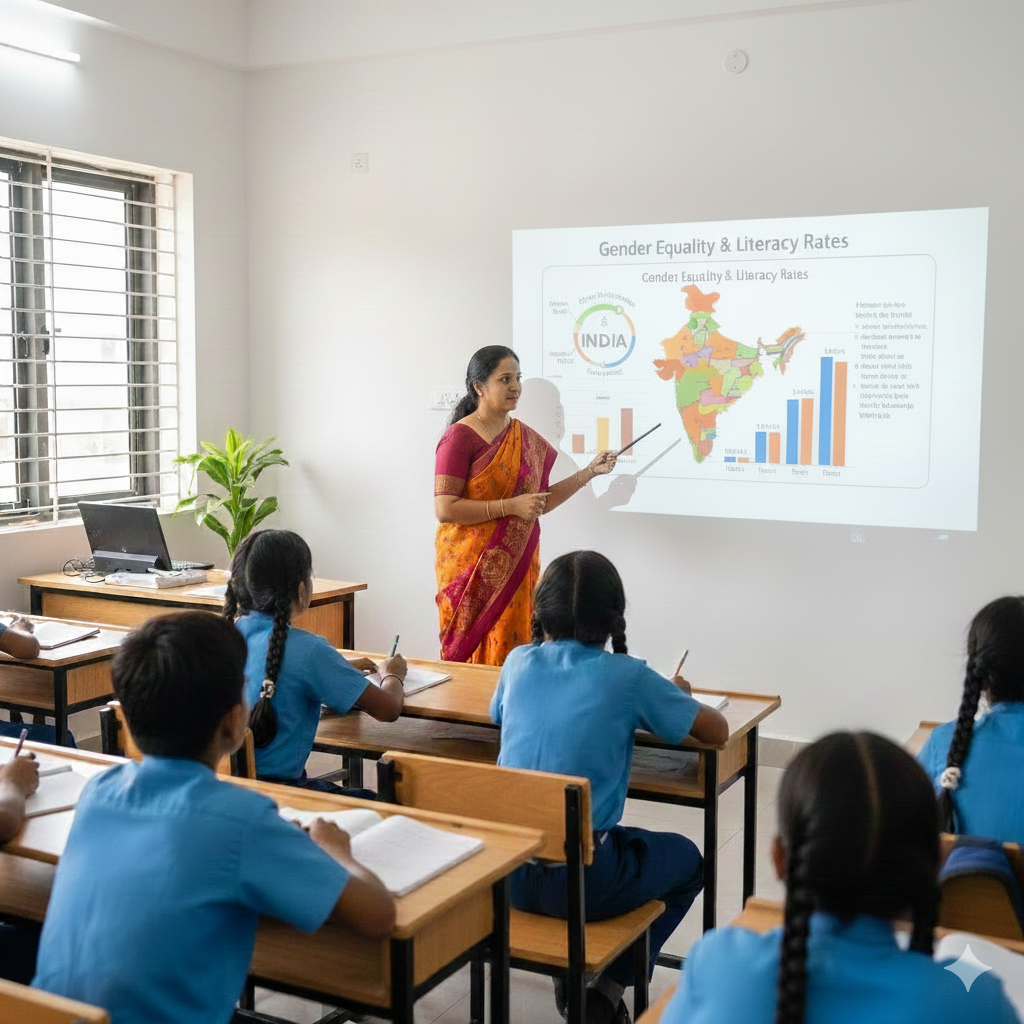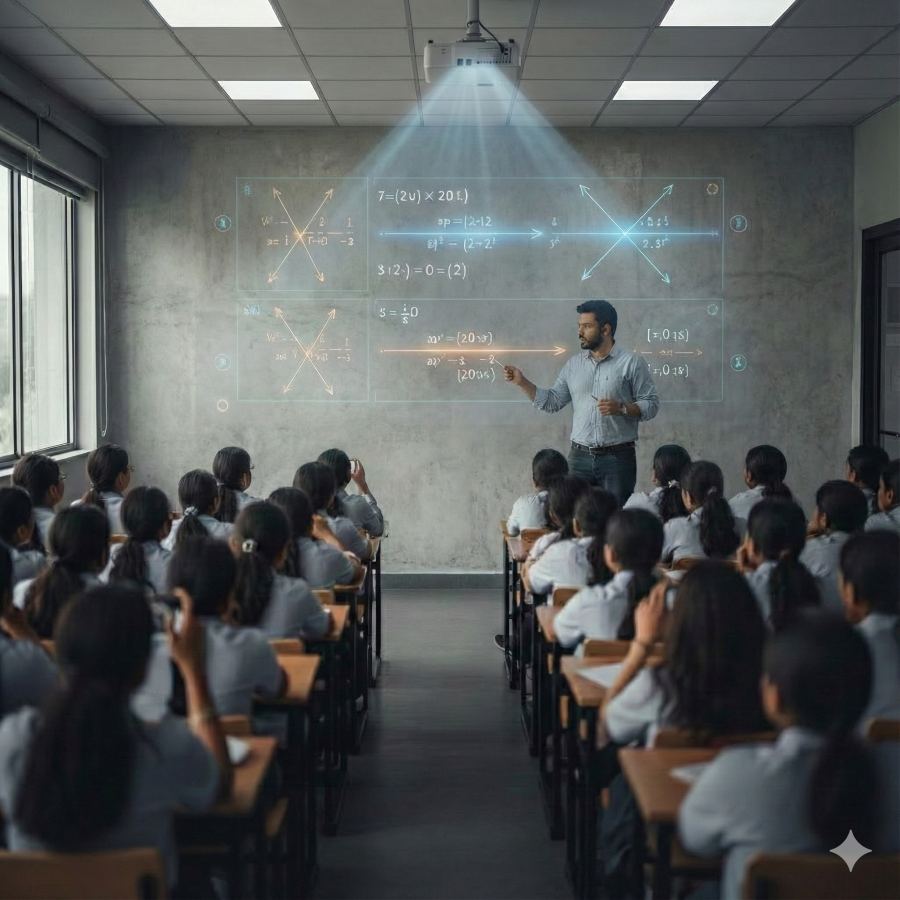What is a Digital Classroom? A Comprehensive Overview

Gone are the days when teaching required paper books or your classroom was limited to a certain number of students. With just a tap of your finger, you can teach anytime, anywhere, more efficiently, and share unlimited insights. Yes, a digital classroom makes it all possible. We're in an exhilarating era for education, where EdTech is opening limitless opportunities for teaching and learning. In this digital world, where you can order food with a few taps on your phone and attend a virtual concert in your pajamas, it’s no surprise that classrooms have gone digital too! A high-tech classroom where the walls are screens, the desks are tablets, and students are collaborating with peers from across the globe—all without anyone leaving their seats.
But what exactly is a digital classroom, and why is it becoming a necessity rather than a luxury? Let’s dig deeper into this new-age educational landscape, explore the benefits, and understand how to create a digital classroom that prepares students for the future. Read on–

So, What is a Digital Classroom?
When you hear "classroom," you're probably visualizing rows of desks, a whiteboard, and maybe that one squeaky chair in the corner, right? It's all about the stuff you can see, and touch.
But now, flip that idea on its head. Enter the digital classroom—a learning space that’s as boundless as your imagination. No walls, no desks, no "take out your textbooks" moments.
Instead, it's like your favorite hangout spots online—think of it like Facebook or X (formerly Twitter). These platforms feel like places you can actually go to, meet up with your friends, chat, share memes, and vibe out, just like you would at a café or your friend’s place.
A digital classroom is just like that—it's a virtual place for learning where the possibilities are endless. Sure, it might start in a physical classroom, but it doesn't stop there. Just like Facebook isn't just a building in Silicon Valley, a digital classroom isn't just in one place. It's everywhere, ready to connect you with knowledge from across the globe, no matter where you are.
The beauty of a digital classroom is its flexibility. It can be an extension of a traditional classroom, providing additional opportunities for research and collaboration, or it can be a fully virtual space, especially useful in today’s remote learning scenarios.
Roombr is flipping the script on education with its digital classroom solution! Imagine turning any boring wall into a massive, interactive screen—yep, that’s Roombr! We're not just talking about traditional classrooms anymore; we're talking about immersive, next-level learning spaces where students and teachers.
With Roombr, education isn’t just about hitting the books—it’s about experiencing lessons in real time, collaborating, and making learning personal and way more exciting. The future classroom isn’t something we’re waiting for; it’s already here, setting the bar high for digital education in India and beyond! (More specific)
Steps in Creating a Digital Classroom Setup
Before you start assembling your digital classroom, the first step is to ensure that your students have access to the necessary devices and internet connectivity. Without this, even the most advanced digital tools won’t be of any use. Once you’ve ticked that box, it’s time to consider the components of a successful digital classroom setup.

Virtual Classrooms and Group Work
Virtual classrooms are the heart of the digital learning experience. These online spaces allow teachers and students to interact in real time, making learning as interactive as it would be in a physical classroom. With features like video conferencing, digital whiteboards, and breakout rooms, virtual classrooms facilitate discussions, presentations, and group projects.
For instance, younger students might benefit from teacher-led sessions in a virtual classroom where they can participate in live quizzes, share files, and collaborate on projects in smaller breakout rooms. Older students, on the other hand, can use these virtual spaces to conduct group work independently, honing their communication and collaboration skills in a digital context.
Video Courses for Anytime Learning
One of the standout features of a digital classroom is the ability to learn anytime, anywhere. With video courses, students can watch recorded lectures, demonstrations, or tutorials at their own pace. This approach not only caters to different learning styles but also allows students to revisit complex topics whenever they need a refresher.
Teachers can enhance these video courses by adding interactive elements like quizzes, hotspots, or annotations, making the learning process more engaging and effective. Plus, with tools that provide detailed analytics, educators can track student progress and ensure they’re on the right path.
Video Creation Tools for Creative Expression
In the digital age, video literacy is just as important as reading and writing. Digital classrooms empower students to express their creativity through video creation tools. Whether it’s recording a presentation, creating a documentary, or developing a tutorial, students can use these tools to showcase their understanding of a subject in a format that resonates with them.
Encouraging students to produce videos not only helps them develop technical skills but also boosts their confidence in sharing their work. Plus, it’s a fun way to break away from traditional assignments and allow students to engage with the material in a way that feels relevant and exciting.
Centralized Platforms for Video and File Sharing
In a digital classroom, having a centralized platform for video and file sharing is crucial. This platform serves as the hub where students and teachers can upload, access, and share educational content. Whether it’s a video lecture, an assignment, or a group project, having everything in one place makes it easier for everyone to stay organized and on track.
A good platform should offer features like secure access, easy file management, and the ability to comment or provide feedback on shared content. This not only streamlines the learning process but also fosters a collaborative environment where students can learn from each other’s work.
Real-Time Feedback and Assessment Tools
Feedback is the cornerstone of any effective learning environment, and in a digital classroom, it’s even more critical. With real-time feedback tools, teachers can assess student performance instantly, whether it’s through quizzes, polls, or project reviews. These tools allow students to understand their strengths and areas for improvement, helping them stay engaged and motivated.
Moreover, digital classrooms offer robust data analytics, providing teachers with insights into student progress, participation, and engagement. This data-driven approach ensures that no student is left behind and that educators can tailor their teaching strategies to meet individual needs.

Why a Digital Classroom Solution is the Best Choice?
The transition to digital classrooms isn’t just about keeping up with the times; it’s about preparing students for a future where digital skills are indispensable. Here’s why a digital classroom solution is a game-changer—
1. Future-Proofing Education
In an increasingly digital world, students must develop the skills needed in higher education and the modern workplace. A digital classroom helps bridge the gap between traditional education and the digital future.
2. Enhanced Collaboration
Digital collaboration in the classroom fosters a team-oriented mindset. Students learn to work together, share ideas, and solve problems, which are critical skills in any career.
3. Personalized Learning
With access to a variety of digital tools, students can learn at their own pace and in their preferred style. This personalized approach ensures that every student gets the support they need to succeed.
4. Increased Engagement
Interactive tools, multimedia content, and real-time feedback make learning more engaging and fun. This keeps students interested and motivated to learn.
5. Flexibility and Accessibility
A digital classroom setup allows for learning anytime, anywhere. Whether students are in a physical classroom or learning remotely, they have access to the resources they need to succeed.
Conclusion
The digital classroom is more than just a trend—it’s a transformative approach to education that equips students with the skills and knowledge they need to thrive in a digital world. By embracing this modern classroom setup, educators can create a learning environment that’s engaging, interactive, and tailored to the needs of today’s students. So, whether you’re a teacher, principal, or tutor, now’s the time to explore the endless possibilities of the digital classroom and take your teaching to the next level.
FAQs
1. How does a digital classroom differ from a traditional classroom?
A digital classroom is an educational environment where technology, such as computers, tablets, and the internet, is integrated into teaching and learning processes. Unlike traditional classrooms that rely on face-to-face interactions and physical materials, digital classrooms leverage digital tools to enhance collaboration, provide personalized learning experiences, and offer flexible, anytime learning opportunities.
2. How can I set up a digital classroom in my school?
To set up a digital classroom, start by ensuring that your students have access to the necessary devices and reliable internet. Next, incorporate virtual classrooms, video courses, and digital collaboration solutions into your teaching. Platforms for video creation, file sharing, and real-time feedback are also essential. The key is to create an environment where students can interact, collaborate, and learn in a way that suits their individual needs.
3. Why is digital collaboration in the classroom important?
Digital collaboration in the classroom is crucial because it helps students develop teamwork, communication, and problem-solving skills. These skills are vital in today’s digital age, where working with others remotely is becoming increasingly common. By collaborating digitally, students learn to navigate online tools, share ideas effectively, and work together towards common goals, preparing them for future academic and professional challenges.
Aneesh Kumar
Share
Step Into the future of
Education with Roombr


















